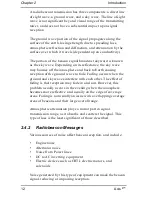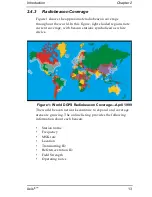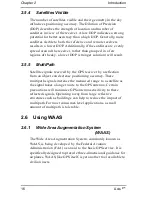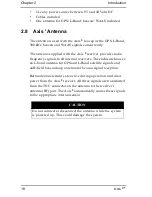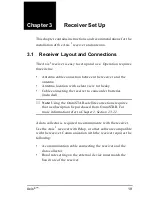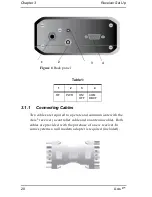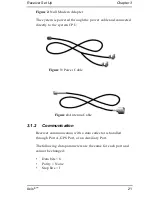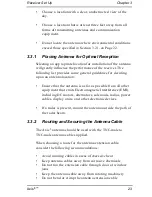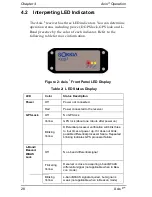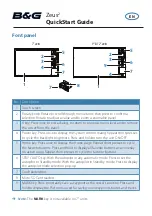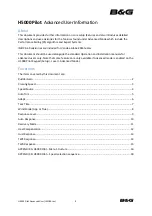
Introduction
Chapter 2
Axis
3™
15
2.5.2
Latency
The latency of differential corrections also affects the achievable
positioning accuracy at the remote receiver. Latency is a
function of the following:
•
The time it takes the base station to calculate corrections
•
The data rate of the radio link
•
The time it takes the signal to reach the user
•
The time required for the remote differential receiver to
demodulate the signal and communicate it to the GPS
receiver
•
Any data loss that occurs through reception problems
Most of these delays require less than a second, though in some
instances, depending upon the amount of information being
transferred, overall delays of three to five seconds may occur.
Latency can become a concern if lock on the differential signal is
lost for ten seconds or more.
To account for latency, a GPS receiver can calculate approximate
corrections until new corrections are available. Calculating the
differential correction for a new epoch, using old corrections,
leads to inaccuracy that grows with time. Accuracy is restored
when new corrections become available.
2.5.3
Ionospheric Errors
Although ionospheric errors are normally removed through
differential positioning, the state of the ionosphere can differ
between the base station and remote user over large distances.
As the base station calculates corrections based on local
ionospheric conditions, they may not completely account for
the errors observed at the remote user’s location. This causes
part of the spatial decorrelation that may be observed over large
distances between base station and remote receivers.
Summary of Contents for Axis 3
Page 1: ... Axis 3 TM Operations Manual Part Number 750 1 0060 Rev 2 GPS Receiver System ...
Page 6: ......
Page 10: ......
Page 11: ...Welcome Chapter 1 Axis 3 5 ...
Page 33: ......
Page 41: ......
Page 43: ......
Page 48: ......
Page 51: ...43 Axis 3 Appendix C Frequently Asked Questions ...
Page 53: ......












